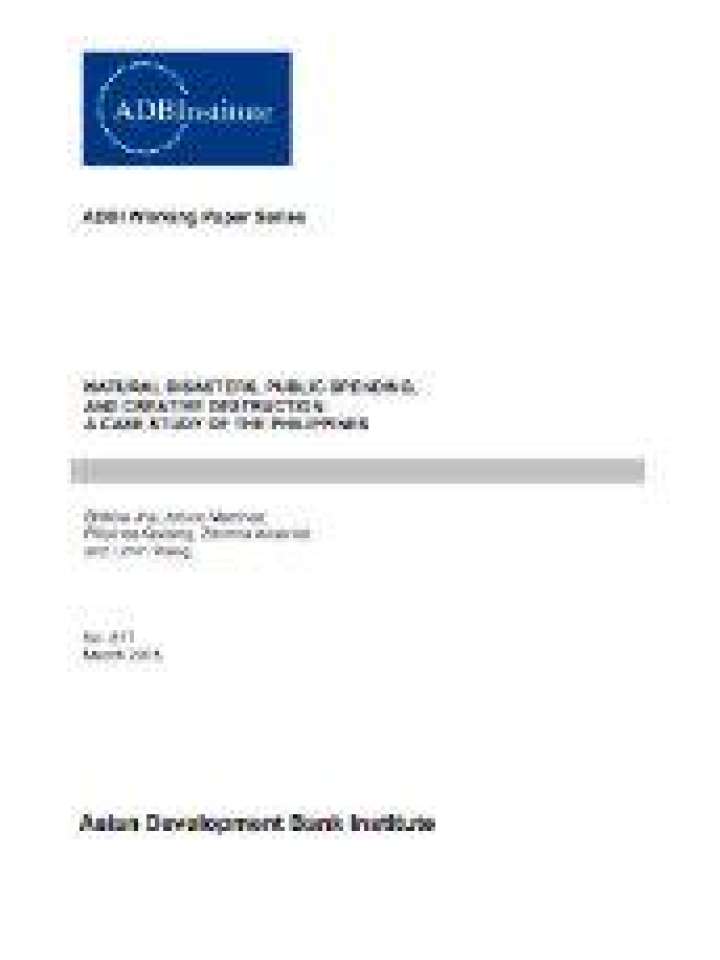Natural disasters, public spending, and creative destruction: a case study of the Philippines
This paper aims to study whether natural disasters in the Philippines trigger subsequent economic growth or other socioeconomic or technological improvements. Using synthetic panel data regressions, the paper shows that typhoon-affected households are more likely to fall into lower income levels, although disasters can also promote economic growth. Augmenting the household data with municipal fiscal data, the analysis shows some evidence of the 'creative destruction' effect: Municipal governments in the Philippines helped mitigate the poverty impact by allocating more fiscal resources to build local resilience while also utilizing additional funds poured in by the national government for rehabilitation and reconstruction.
Typhoons, floods, and other weather-related shocks can inflict suffering on local populations and create life-threatening conditions for the poor. Yet, natural disasters also present a development opportunity to upgrade capital stock, adopt new technologies, enhance the risk-resiliency of existing systems, and raise standards of living. This is akin to the “creative destruction” hypothesis coined by economist Joseph Schumpeter in 1943 to describe the process where innovation, learning, and growth promote advanced technologies as conventional technologies become outmoded.
Explore further

